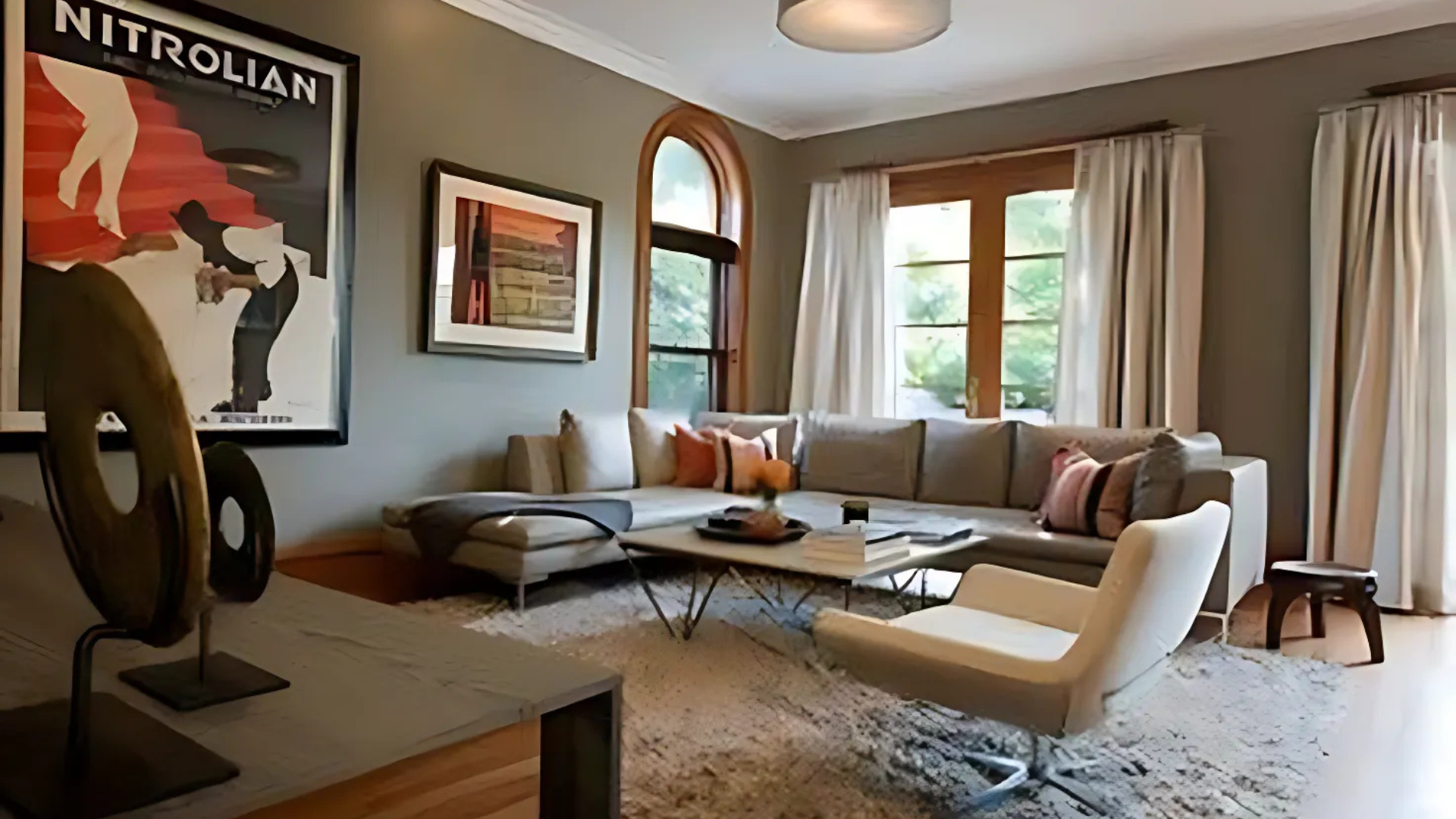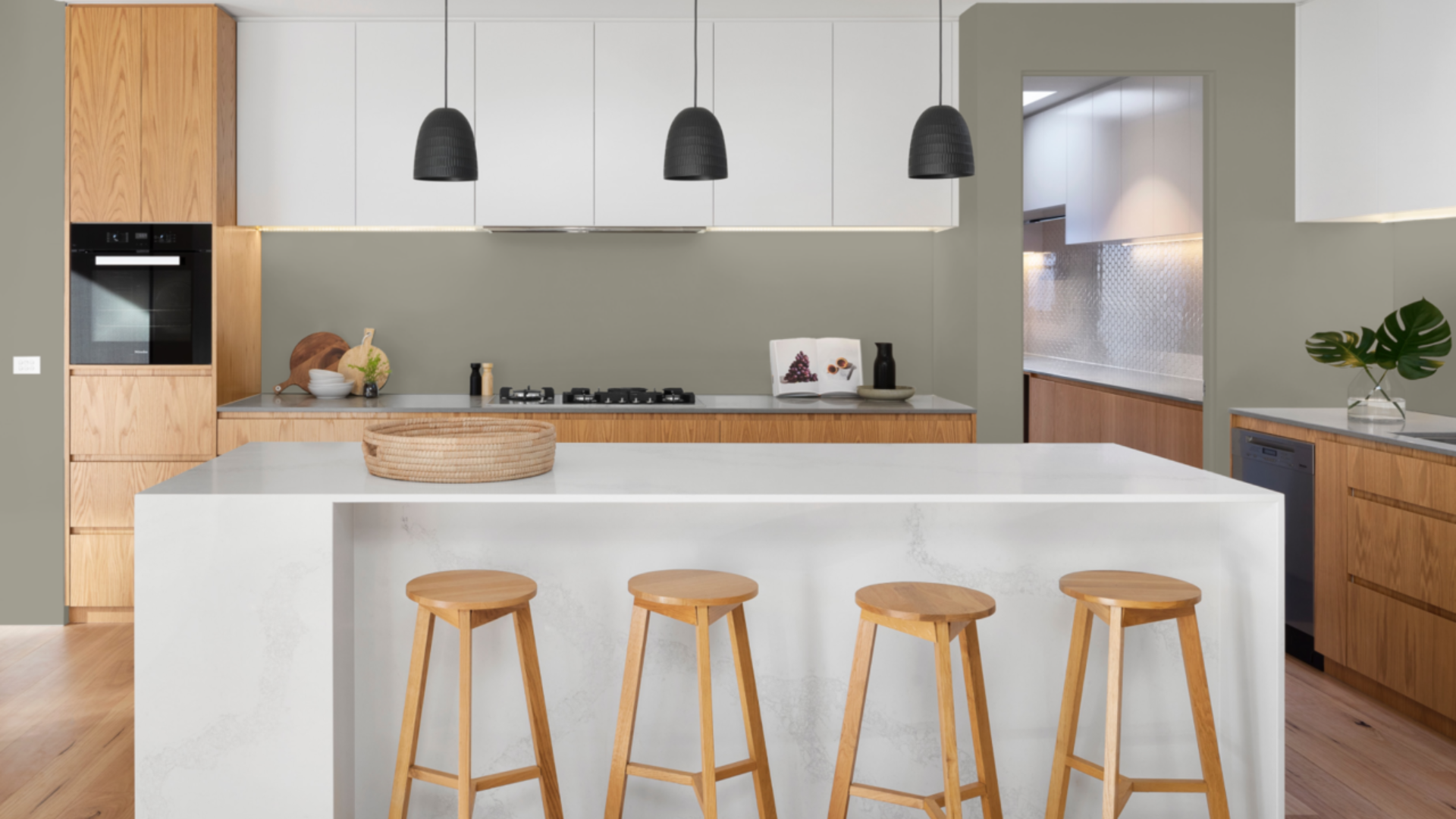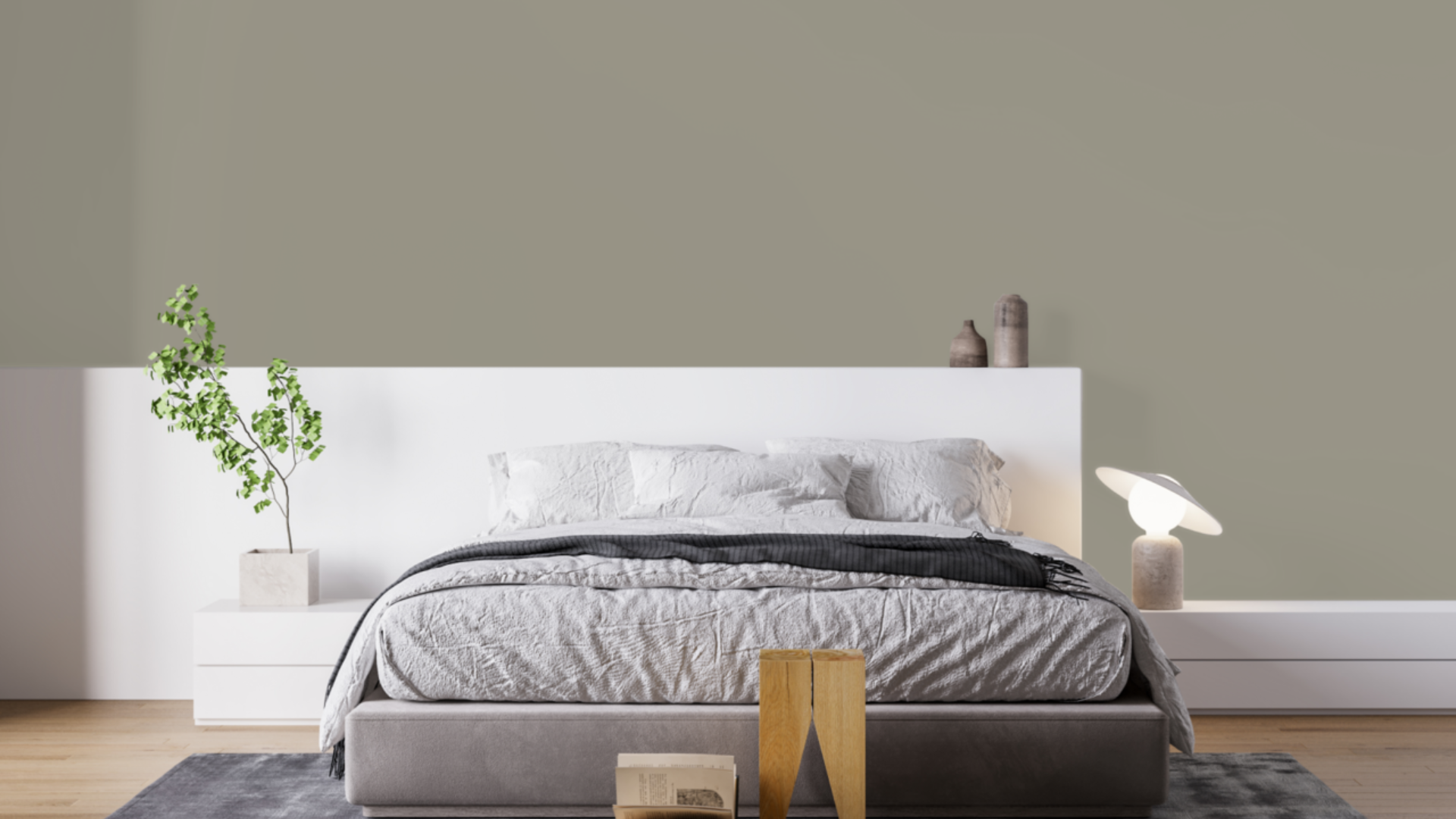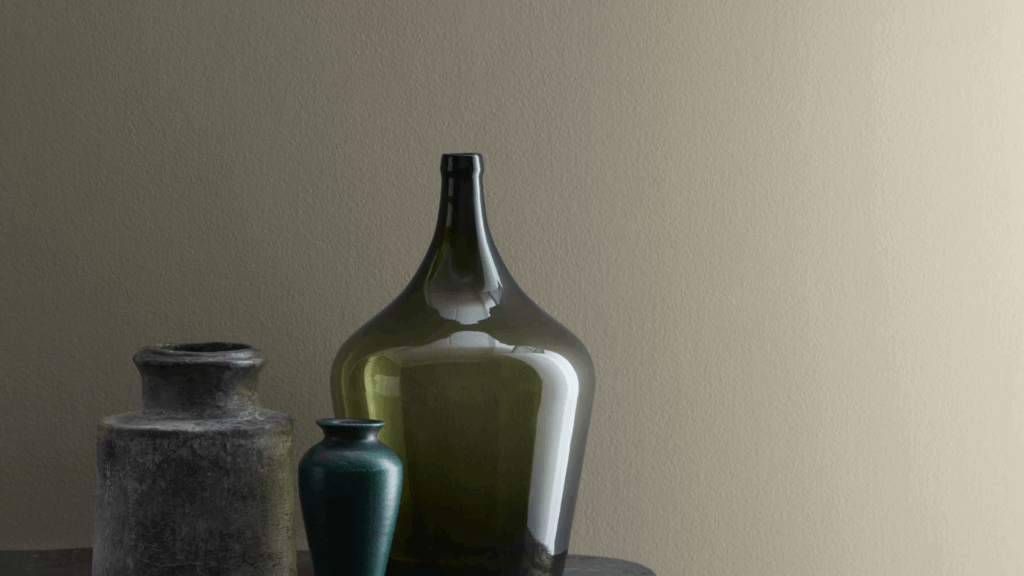Some paint colors can feel too cool or too flat. Squirrel Tail by Benjamin Moore brings a deeper, richer feel to a room. It has an earthy tone that helps add balance without being too bold.
This warm gray works well in both large and small spaces. It adds weight to a room in a way that feels grounded. The color has a steady, calm presence that works across different parts of the home.
Squirrel Tail blends well with natural wood, dark metals, and soft fabrics. It can be used on walls, trim, or cabinets without taking over the space. It also holds up well in various lighting conditions, which makes it useful throughout the day.
For those looking for a warm gray that adds depth without feeling heavy, Squirrel Tail is worth a closer look. It provides a solid foundation that remains inviting and well-balanced.
Why Squirrel Tail Is the Perfect Choice for Your Space?

Squirrel Tail is a deeper gray with a soft, earthy tone that helps a space feel steady. It gives rooms a calm base and works well in both large and small areas. Its warm feel makes it useful in many home styles and settings.
People often choose Squirrel Tail because it:
- Has an earthy warmth that avoids feeling cold
- Works well in both bright and low-light rooms
- Blends with wood, metal, and natural materials
- Supports other colors without clashing
- Feels steady and grounded without looking dull
This paint color brings balance to a room and is simple to match with furniture, floors, and finishes. It’s a good choice for anyone wanting a deeper gray that still feels easy to live with.
The Undertones of Squirrel Tail
Squirrel Tail is a warm gray with strong earthy undertones. It leans into brown, which helps it feel more grounded than cool or blue-toned grays. This gives it a rich, steady look that works well in many settings.
These undertones shift depending on the lighting and time of day. In bright natural light, it shows more of its true gray side. In dimly lit spaces or under soft lighting, the brown base becomes more noticeable.
The mix of warm gray and earthy brown helps this color stay balanced. It brings just enough depth to feel solid, without making a space feel heavy or dark.
Squirrel Tail LRV: Light Reflectance Value Explained
Squirrel Tail has a Light Reflectance Value (LRV) of 24.91. This means it reflects a low amount of light, which gives it a deeper, fuller appearance. It’s more of a grounding color than one that adds brightness.
Due to its low LRV, it’s best suited for use in spaces with good lighting. Natural light helps prevent the color from feeling too dense. In darker rooms, it may make the space feel smaller unless paired with light trim or flooring.
Even though it doesn’t reflect much light, Squirrel Tail offers a steady tone that holds up well. It adds structure and weight to a room, making it feel more settled and complete.
The Psychology of Squirrel Tail: How It Affects Your Mood

Squirrel Tail creates a calming effect thanks to its deep and natural feel. It brings in warmth without feeling loud or distracting. This makes it a good option for spaces where you want to feel at ease.
The color has an earthy base that can help people feel more grounded. It adds stability to a space, which is helpful in areas meant for rest, focus, or conversation. It’s not a color that shouts—it sits quietly in the background.
Due to these qualities, Squirrel Tail is well-suited for use in bedrooms, living rooms, and dining areas. It creates a space that feels settled, without adding too much weight.
How Does Squirrel Tail Look in Different Lighting?
Squirrel Tail responds to light in subtle ways. In north-facing rooms, the color can appear cooler and slightly more gray, yet still retains some of its warmth. This helps it stay calm even when light is limited.
In south-facing rooms, the strong natural light brings out more of the brown undertones. This makes the space feel warmer and fuller during the day. The color holds up well without looking washed out.
East- and west-facing rooms will show the paint differently depending on the time of day. Morning light in east-facing rooms gives it a soft, muted tone. In the afternoon, west-facing rooms bring out a richer and deeper look.
Where Is Squirrel Tail Best Used in an Interior?

Squirrel Tail is strong enough to stand out but soft enough to work as a base. Its deep tone makes it a good fit for walls, accents, and even furniture. It adds a grounded feel without making the room feel small.
Popular places to use Squirrel Tail include:
- Living rooms for a solid and calm background
- Bedrooms for a quiet, deeper tone
- Dining rooms with warm lighting and natural textures
- Trim and doors to add depth next to lighter walls
- Cabinets, especially in kitchens with wood or metal finishes
- Accent walls that need a color with strength but not too much contrast
Squirrel Tail works well as either a main color or an accent. No matter how it’s used, it brings a steady feel that fits in easily across the home.
What Kind of Floors Would Look Best with Squirrel Tail?
Flooring plays a big part in how Squirrel Tail looks in a room. This color has a deep, warm base, so the floor should balance that without feeling too dark or too light. Picking the right floor helps the color look its best.
Good floor options to pair with Squirrel Tail include:
- Medium to dark hardwoods like walnut or chestnut
- Light oak to add contrast and brightness
- Warm gray or beige tiles for a soft, even look
- Natural stone with brown or taupe tones
- Neutral carpets in tan, beige, or beige shades
- Whitewashed floors for contrast in well-lit rooms
Choosing the right floor helps Squirrel Tail feel settled and balanced. The color stands out just enough when the base of the room complements it, not clashes with it.
How to Incorporate Squirrel Tail Into Your Home Decor?

Squirrel Tail works well as a base or accent color due to its earthy tone and steady appearance. It adds weight to a room without feeling harsh. This makes it easy to use in many areas of the home.
Pair it with natural wood, leather, or dark metal to keep the room grounded. Soft fabrics in cream, beige, or muted olive help balance the deeper tone. You can also add contrast with lighter walls, trim, or rugs.
Accent pieces, such as black light fixtures, stone decor, or warm-colored art, can add interest without clashing. Use warm lighting to bring out the softer side of the paint. These choices help create a room that feels complete and easy to enjoy.
Squirrel Tail vs. Other Warm Grays
Squirrel Tail is often compared to other deep, warm grays, such as Kendall Charcoal and Chelsea Gray. All three are popular choices, but each one brings a slightly different tone to the room. These subtle changes in depth and undertone can significantly impact how a space feels.
| Feature | Squirrel Tail (1476) | Kendall Charcoal (HC-166) | Chelsea Gray (HC-168) |
|---|---|---|---|
| Undertone | Warm with an earthy brown base | Cool brown with deep gray | Warm with a slight green hint |
| Depth | Deep but softer | Darkest and boldest | Medium-deep and refined |
| Best For | Calm, grounded spaces | Bold walls or accents | Clean, tailored looks |
| Light Behavior | Holds color well in all light | Can feel heavy in low light | Shifts slightly with light |
Squirrel Tail sits in the middle when it comes to strength and warmth. It provides a solid, warm gray that avoids being too dark or sharp, making it easier to integrate into everyday spaces.
Conclusion
Squirrel Tail is a warm gray that gives structure and comfort to a room. It doesn’t feel too light or too dark, making it easy to use in many areas of the home. The color remains steady under different lighting conditions, which helps it retain its usefulness throughout the day.
This shade pairs well with wood tones, metal finishes, and neutral fabrics. It works on walls, trim, and cabinets, offering a smooth background for other colors and textures. Its earthy base helps rooms feel more pulled together and calm.
Squirrel Tail is a helpful choice for individuals who prefer a gray that feels rich but not too strong. It adds depth to the room while still allowing other elements to stand out. This makes it a steady choice for many home styles and spaces.
Frequently Asked Questions
Can Squirrel Tail Be Used on Interior Doors?
Yes, Squirrel Tail works well on interior doors, especially when paired with light-colored walls. It adds contrast without being too bold, helping to define the space.
Is Squirrel Tail a Good Choice for Fireplace Surrounds?
Squirrel Tail is a solid option for fireplace surrounds. Its warm gray tone blends well with stone, brick, or wood and adds depth without taking over the room.
Does Squirrel Tail Work with Brass or Gold Fixtures?
Yes, brass or gold finishes pair nicely with Squirrel Tail. The warm base of the paint and the metallic tones work together to create a balanced and complete look.
What Sheen Should I Use with Squirrel Tail on Walls?
A matte or eggshell finish works best for walls painted in Squirrel Tail. These finishes help soften the deep tone and reduce glare, especially in natural light.
Can Squirrel Tail Be Used on Furniture?
Yes, Squirrel Tail can be painted on furniture, such as dressers, bookshelves, or cabinets. It adds a grounded, steady tone that works well with both light and dark decor.

